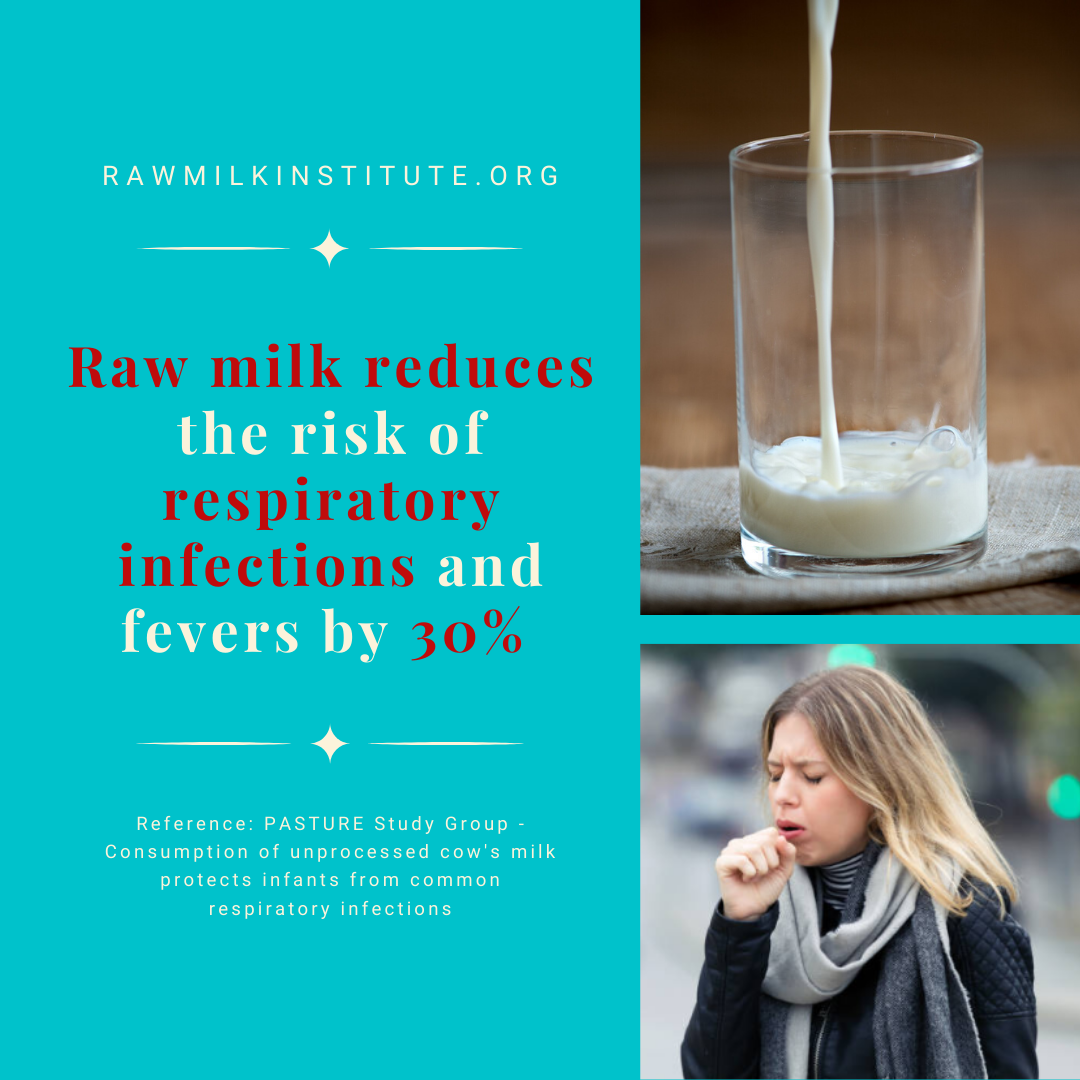A study of 983 European infants looked at consumption of raw milk, pasteurized milk, and ultra-high temperature pasteurized milk alongside occurrence of respiratory tract infections, rhinitis (runny nose), otitis (ear infections), and fever. This study was published in January 2015 in the Journal of Allergy and Clinical Immunology [1].
Every week from age 8 weeks to 53 weeks, the infants’ health outcomes and dairy consumption were tracked. “The main finding of this analysis was an inverse association between consumption of unprocessed [raw] cow's milk and rhinitis, RTI [respiratory tract infection], and otitis.” There was also an inverse association between raw milk and fevers.
In layman’s terms, an “inverse association” means that as one increases, the other decreases. This study thus found that, as raw milk consumption increased, the incidence of runny nose, respiratory tract infections, fevers, and ear infections decreased. The researchers concluded that, “The protective effects of raw cow's milk on infections were comparable to those of breast-feeding, suggesting similar anti-infective properties of bovine and human milk.”
Additionally, C-reactive proteins were measured in the infants at 12 months old. C-reactive proteins are a measure of inflammation in the body. The study found that “raw farm milk consumption was inversely associated with C-reactive protein levels at 12 months.” The researchers concluded that consumption of raw milk led to a “sustained anti-inflammatory effect” in the body.
It is clear from this research that raw milk consumption is correlated with improved resistance to respiratory tract infections, ear infections, fevers, and overall inflammation.
References
[1] Consumption of unprocessed cow's milk protects infants from common respiratory infections. Journal of Allergy and Clinical Immunology. 2015; 135 (1): 56-62. Loss G, Depner M, Ulfman LH, Joost van Neerven RJ, Hose AJ, Genuneit J, Karvonen M, Hyvärinen A, Kaulek V, Roduit C, Weber J, Lauener R, Pfefferle PI, Pekkanen J, Vaarala O, Dalphin JC, Riedler J, Braun-Fahrländer C, von Mutius E, Ege MJ; PASTURE study group. https://www.jacionline.org/article/S0091-6749%2814%2901274-3/fulltext


